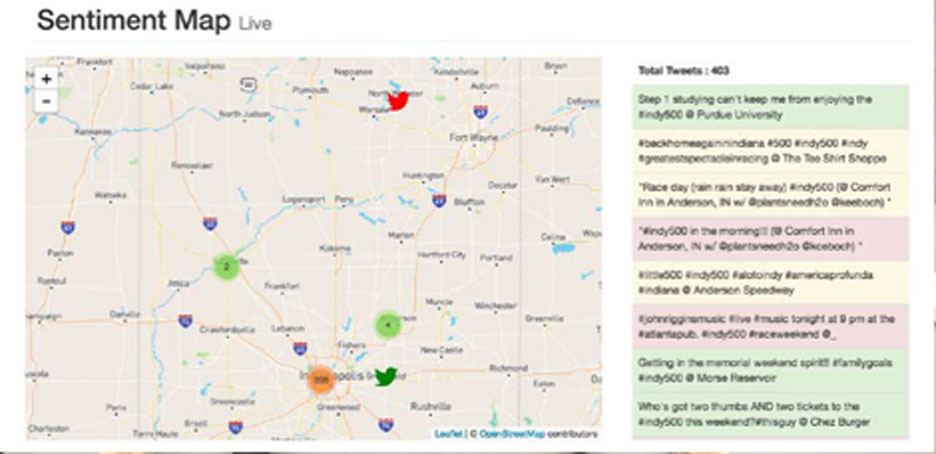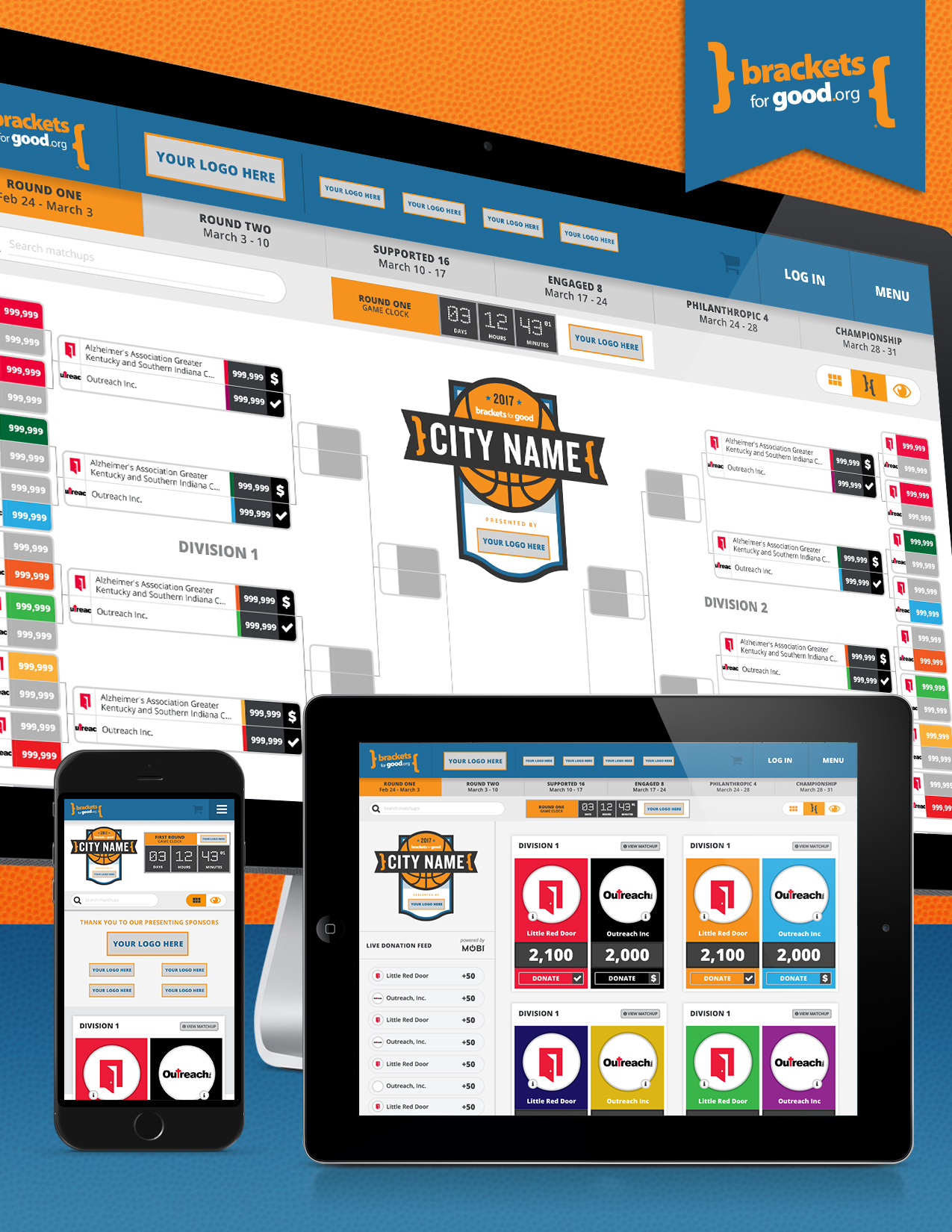Mathew Palakal, Salman Haider, Erica Shonkwiler, and David Pierce
Partnership: School of Informatics, School of Physical Education and Tourism Management
The purpose of this project is to outline the implementation of a real-time sentiment analyzer dashboard based on various events, trends or hashtags as described and expressed on social media. This project is classified into three broad sections, namely data engineering, analytics and visualization. The objective of this project was to have a fully automated system that allows any brand to measure its reputation by looking at their social media presence. It should not only provide customer sentiment, but also find customer reach, respond to customer posts or tweets, analyze competitors, assist in any potential crisis and capability to add context to share of voice. Machine Learning algorithms used in this project are Naive Bayes and SVM with above 80 percent accuracy.
The result of this project was an application created via Node.js that provided consumers with features such as real-time automated sentiment classification, collective visual representation of all social media activity, Geo-location tracking, customer engagement, dynamic charts for rapid business decision making, and after event reporting.
Future work of this study includes the idea that machine learning techniques perform well for classifying sentiment in tweets; however, the accuracy could be improved. Ideas that could help improve the accuracy including polarity of a tweet may depend on the perspective you are interpreting the tweet from.
Other ideas include semantics by using a semantic role labeler that may indicate which noun is mainly associated with the verb; the classification would take place accordingly. Fake posts, including more social media platforms like LinkedIN, Quora, Youtube etc., and commercial use of the system could be considered.





